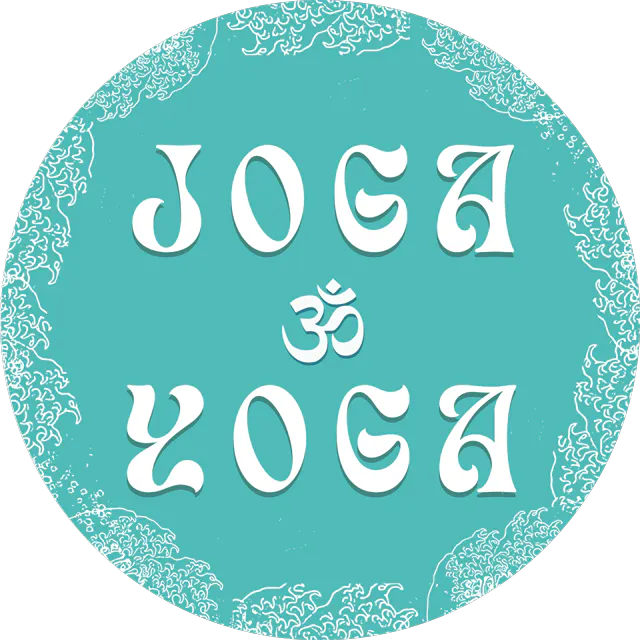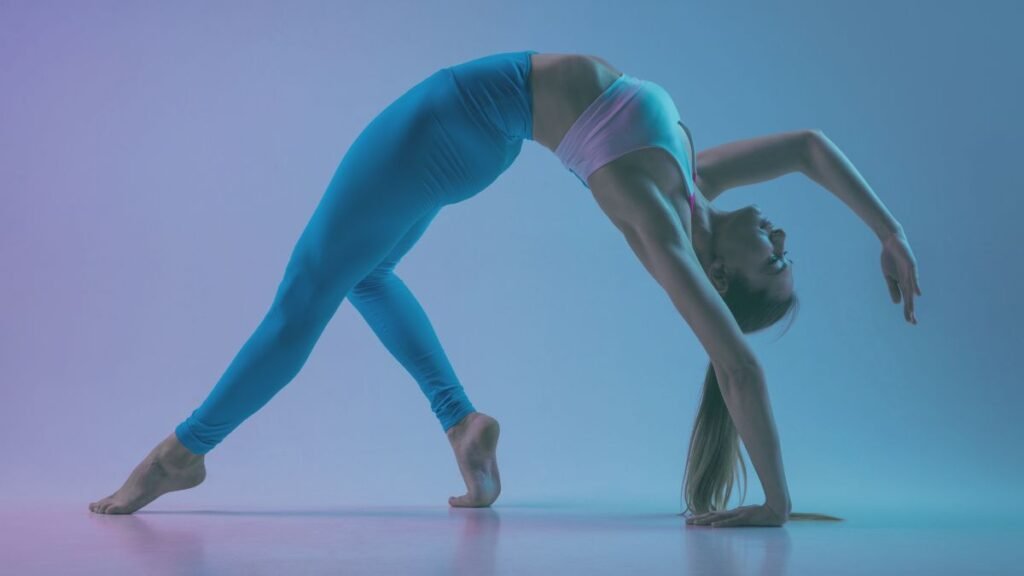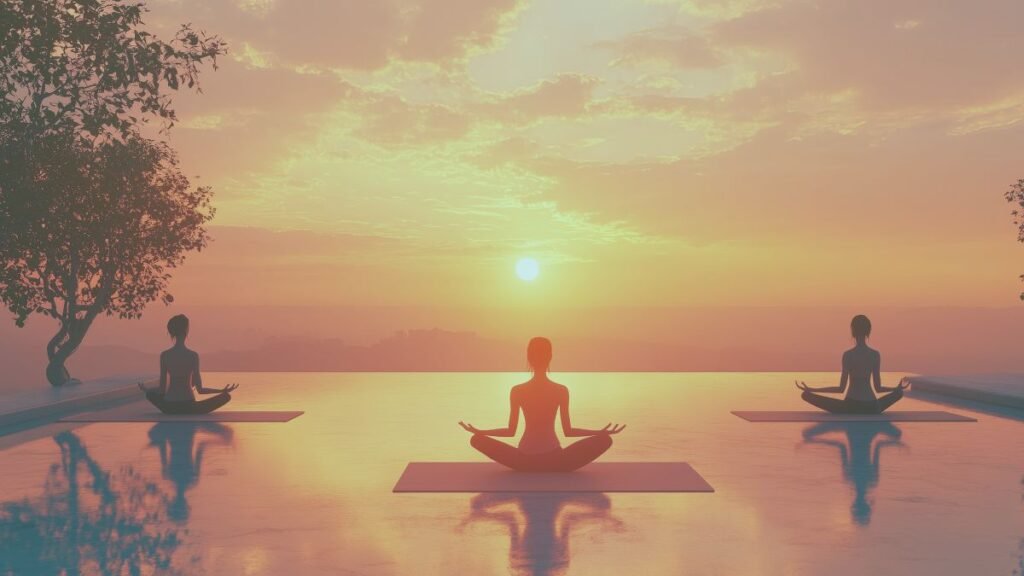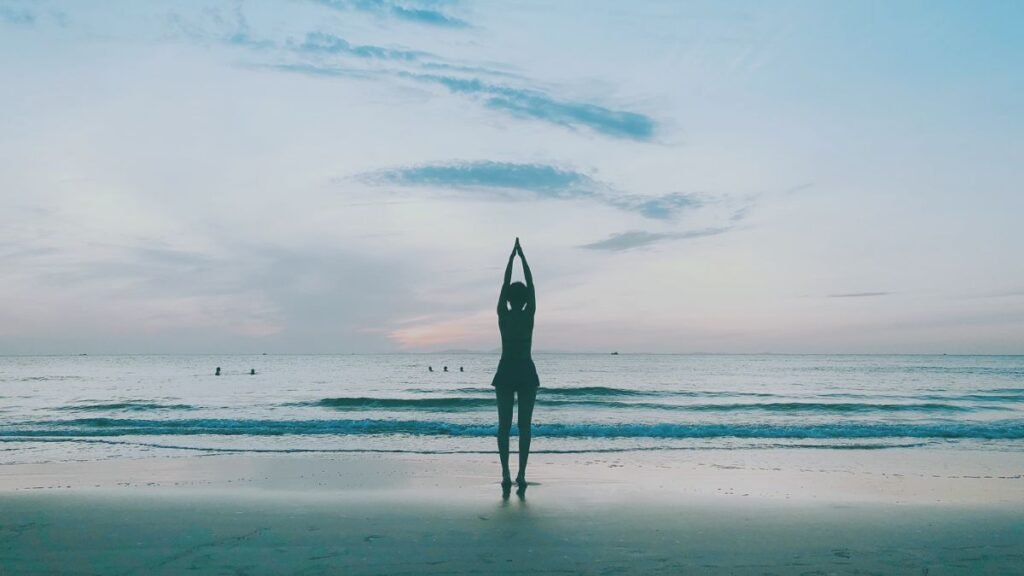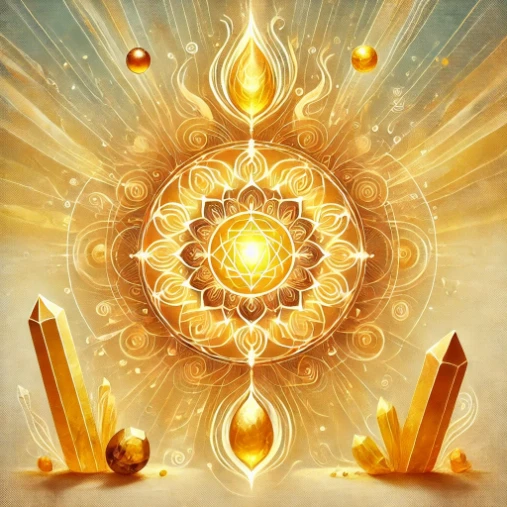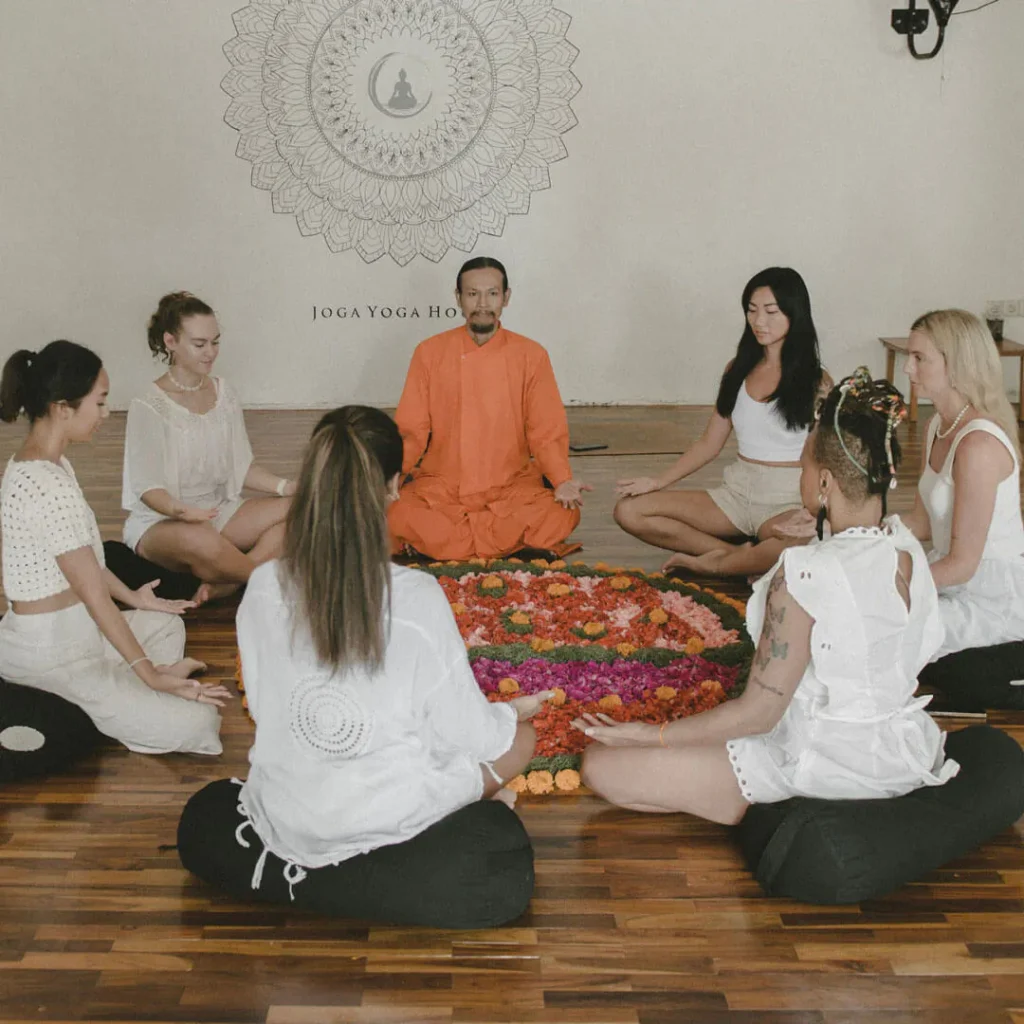The navel chakra, also known as the Manipura chakra, is a vital energy center in our body, located near the belly button. It is said to be the location where the kundalini snake , a dormant energy force, resides. When awakened, this energy rises through the chakras, leading to spiritual growth and enlightenment.
The belly button chakra is the third chakra in the traditional seven-chakra system and is associated with personal power, self-esteem, and the ability to regulate emotions. Balancing the navel chakra can help foster confidence, emotional stability, and personal transformation, while imbalances can lead to anxiety, stress, and physical health challenges. In this post, we’ll explore how you can activate and balance your navel chakra for optimal emotional and physical well-being.
Understanding the Key Concepts of the Navel Chakra
The Manipura chakra, located at the solar plexus, is often associated with the color yellow and the element of fire. This fiery energy represents transformation and the power to act on your desires. It is responsible for our sense of personal power, confidence, and decision-making. When this chakra is balanced, you feel empowered, clear-minded, and in control of your life. On a physical level, the navel chakra connects to the autonomic nervous system, particularly the sympathetic nervous system, which governs the body’s response to stress and anxiety.
The solar plexus, where the navel chakra is situated, is often referred to as the seat of Prana (vital energy). A well-balanced navel chakra allows Prana to flow freely, nourishing both body and mind. When your Prana is strong, you’re better equipped to face challenges with emotional stability and a clear mind.

Emotional and Physical Manifestations of the Navel Chakra
An imbalanced navel chakra can manifest in various emotional and physical ways. Common emotional symptoms include self-doubt, lack of confidence, and anxiety. You may feel stuck or unable to assert yourself in situations that require decisiveness. Physically, an unbalanced navel chakra can lead to digestive issues, fatigue, or a weakened core.
On the positive side, when your navel chakra is balanced, you will experience a sense of self-esteem and a clearer understanding of your personal power. You will be better at regulating your emotions and making decisions that align with your true self.
How to Activate and Balance Your Navel Chakra
You can incorporate several practices into your daily life to activate and balance the navel chakra. Here are some of the most effective methods:
1. Yoga Poses for Manipura Chakra:
- Boat Pose (Navasana): This pose strengthens your core and directly stimulates the navel chakra, helping to build personal power.
- Plank Pose (Phalakasana): Holding a strong plank challenges your core and aligns with the energy of stability and power.
- Warrior II Pose (Virabhadrasana II): This pose opens your solar plexus and helps foster strength and confidence.
- Twisting Poses: Twisting yoga poses help release blocked energy in the navel chakra, allowing for emotional detoxification.
Table of Yoga Poses for Manipura Chakra
| Technique | Description | Benefits | Precautions |
|---|---|---|---|
| Boat Pose (Paripurna Navasana) | Sit with your legs straight out in front of you. Lean back slightly, lifting your feet off the ground. Engage your core and keep your back straight. | Strengthens abdominal muscles, improves balance, and boosts confidence. | Avoid if you have back pain or a weak core. |
| Warrior II Pose (Virabhadrasana II) | Step your right foot forward and turn your right foot 90 degrees to the right. Bend your right knee and bring your arms parallel to the floor, extending them in opposite directions. | Strengthens legs and core, improves balance, and enhances willpower. | Avoid if you have knee pain or a recent injury. |
| Triangle Pose (Trikonasana) | Stand with your feet about 3 feet apart. Turn your right foot 90 degrees to the right and your left foot slightly inward. Extend your arms out to the sides, parallel to the floor. Bend to the right, reaching your right hand down towards your right foot. | Stretches the spine, improves flexibility, and promotes grounding. | Avoid if you have dizziness or balance issues. |
2. Breathing Techniques:
The Breath of Fire technique is one of the most effective methods for stimulating the Manipura chakra. By taking rapid, rhythmic breaths from the diaphragm, this practice helps ignite the fire element within and clears any energy blockages.
Table of Breathing Exercises for Manipura Chakra
| Technique | Description | Benefits | Precautions |
|---|---|---|---|
| Kapalabhati Pranayama (Skull Shining Breath) | Inhale deeply through the nostrils, then forcefully exhale through the nostrils, contracting the abdominal muscles. Repeat for several minutes. | Cleanses the respiratory system, increases energy levels, and sharpens the mind. | Avoid if you have high blood pressure or are pregnant. |
| Bhastrika Pranayama (Bellows Breath) | Inhale and exhale forcefully through the nostrils, using the diaphragm. Repeat for several minutes. | Increases energy levels, improves focus, and reduces stress. | Avoid if you have high blood pressure or are pregnant. |
| Ujjayi Pranayama (Victorious Breath) | Inhale deeply through the nostrils, creating a soft constriction at the back of the throat. Exhale slowly through the nostrils, maintaining the constriction. | Calms the mind, reduces stress, and improves focus. | Avoid if you have difficulty breathing. |
3. Crystals for Chakra Healing:
Certain crystals resonate strongly with the energy of the navel chakra. Amber, Citrine, and Tiger’s Eye are powerful tools for balancing this energy center. Wearing or meditating with these stones can help ground and balance your navel chakra, promoting emotional stability and confidence.
Daily Practices to Maintain Navel Chakra Health

To maintain a healthy navel chakra, incorporate these practices into your daily routine:
1. Affirmations: Using positive affirmations is a simple yet effective way to keep your Manipura chakra balanced. Phrases such as “I am confident,” “I trust myself,” and “I am in control of my life” can help reinforce feelings of personal power.
Table of Affirmations for Manipura Chakra
| Technique | Description | Benefits | Precautions |
|---|---|---|---|
| “I am strong and capable.” | This affirmation helps to build self-confidence and a sense of inner strength. | Boosts self-esteem, increases motivation, and helps to manifest goals. | None |
| “I am worthy of love and success.” | This affirmation helps to cultivate a sense of self-worth and belief in your own abilities. | Boosts self-esteem, increases motivation, and helps to manifest goals. | None |
| “I am in control of my life.” | This affirmation helps to empower you to take charge of your life and make choices that align with your values. | Boosts self-esteem, increases motivation, and helps to manifest goals. | None |
2. Meditation: Meditation allows you to focus your energy on balancing your chakras. When working with the navel chakra, visualize a radiant yellow light at your solar plexus, growing brighter with each inhale. This can help you align with your inner power and sense of self-worth.
Table of Meditation Practices for Manipura Chakra
| Technique | Description | Benefits | Precautions |
|---|---|---|---|
| Visualization Meditation | Sit comfortably with your spine straight. Close your eyes and visualize a bright yellow light radiating from your solar plexus chakra. Focus on the warmth and energy of the light. | Promotes self-confidence, willpower, and a sense of inner strength. | None |
| Affirmation Meditation | Sit comfortably with your spine straight. Close your eyes and repeat positive affirmations related to self-worth, confidence, and personal power. | Boosts self-esteem, increases motivation, and helps to manifest goals. | None |
3. Essential Oils: Aromatherapy is another way to nurture the navel chakra. Essential oils like chamomile, lavender, lemon, and anise can help calm anxiety and bring balance to this energy center. You can diffuse these oils, use them in a bath, or apply them topically to promote relaxation and balance.
Chakra Blockages and Their Impact
When blockages occur in the navel chakra, it can lead to more than just emotional disturbances. A blocked navel chakra can manifest as indigestion, ulcers, or a weakened immune system. Emotionally, you might feel a lack of motivation or an inability to take charge of your life. These blockages often result from experiences of failure, criticism, or feeling out of control, leading to a diminished sense of self-worth.
Balancing the chakra through the practices mentioned above can help you regain your inner strength, enabling you to overcome these challenges.

Healing Through Emotional Transformation
Working with the navel chakra not only heals the body but also transforms your emotional state. As you engage in these practices, you’ll notice shifts in how you perceive yourself and the world around you. Over time, self-doubt will give way to confidence, and indecision will transform into clarity.
This emotional healing is one of the most profound aspects of working with the Manipura chakra. When your energy is aligned with this chakra, you’ll find yourself more open to new experiences, less fearful of taking risks, and more connected to your personal power.
Conclusion: Empower Yourself by Balancing the Navel Chakra
The navel chakra is a powerful center of transformation, personal power, and emotional balance. By integrating practices like yoga, meditation, breathing techniques, and crystal healing into your routine, you can strengthen this chakra and unlock your full potential. Empowering your Manipura chakra allows you to navigate life with confidence, clarity, and emotional resilience.
Take the time to nurture your navel chakra and experience the profound benefits that come from this vital energy center.
FAQs
What is the navel chakra responsible for?
The navel chakra, or Manipura chakra, is responsible for personal power, self-esteem, and emotional regulation. It governs our confidence, decision-making abilities, and how we handle stress and anxiety.
How can I tell if my navel chakra is blocked?
Signs of a blocked navel chakra include low self-esteem, lack of confidence, digestive issues, and feelings of self-doubt or anxiety. Physical symptoms might include fatigue and indigestion.
What yoga poses are best for activating the navel chakra?
Yoga poses like Boat Pose (Navasana), Plank Pose (Phalakasana), Warrior II (Virabhadrasana II), and twisting poses are effective for activating and balancing the navel chakra.
Which crystals are helpful for balancing the navel chakra?
Crystals such as Amber, Citrine, and Tiger’s Eye are known to resonate with the navel chakra. These stones help promote emotional stability and confidence.
How do I use essential oils to balance my navel chakra?
Essential oils like chamomile, lavender, lemon, and anise can be diffused, applied topically, or used in baths to help balance the navel chakra and relieve anxiety.
